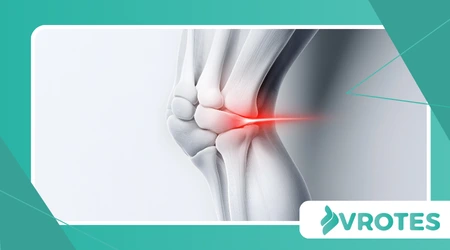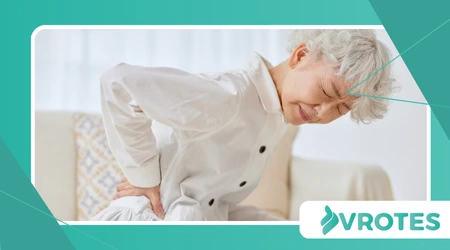Understanding “Menopausal Joint Pain” Beyond Arthritis

Understanding “Menopausal Joint Pain”. The question whether the pain is merely arthritis is critical for effective management.
Anúncios
While it is true that aging increases the risk of osteoarthritis, the pain experienced during the menopausal transition, clinically known as menopausal arthralgia, often presents differently.
It frequently manifests as widespread aches, symmetrical stiffness, and pain in multiple, sometimes unusual, joints like the neck or shoulders.
These are not always the classic weight-bearing joint symptoms typical of early osteoarthritis. The primary driver here is the precipitous drop in estrogen.
How Does Estrogen Directly Impact Joint Health?
Estrogen is more than a reproductive hormone; it is a powerful guardian of the musculoskeletal system.
Anúncios
It possesses significant anti-inflammatory properties, essentially acting as a natural balm for the body’s tissues. Estrogen also supports cartilage integrity.
It helps maintain the elasticity and hydration of joint cartilage, which is vital for smooth, frictionless movement.
When estrogen levels decline, this protective shield is removed. Inflammation can increase throughout the body, and cartilage becomes more vulnerable to damage and dehydration.
What is the Role of Systemic Inflammation? Understanding “Menopausal Joint Pain”
A decrease in estrogen is linked to a rise in pro-inflammatory cytokines, which are signaling molecules that promote inflammation.
This heightened systemic inflammation does not limit itself to one joint; it is a body-wide phenomenon.
This can cause the widespread pain and morning stiffness that many women report.
This inflammatory state creates an environment where joints are inherently more sensitive and prone to discomfort, even without advanced cartilage loss.
Read more: Menopause and Increased Allergic Responses
Consider the example of a finely tuned engine, perfectly lubricated and cooled.
When the cooling system (estrogen) fails, the engine temperature (inflammation) spikes, leading to friction and stress on all parts.
The joints, in this analogy, are the moving parts that suffer the consequences of the systemic “overheating.”
Beyond Cartilage: What Other Tissues are Involved in Menopausal Joint Pain?
The joint is a complex structure involving more than just bone and cartilage.
Ligaments, tendons, and the synovium—the tissue lining the joint that produces lubricating fluid—all contain estrogen receptors.
Read here: The Surprising Link Between Menopause and Gum Health
The pain isn’t just a matter of “bone rubbing on bone.” Decreased estrogen can weaken the grip of ligaments and tendons.
This reduced support can lead to joint instability and subsequent pain.

How Does Estrogen Deficiency Affect Muscle and Bone?
Muscle mass tends to decrease during menopause, a condition called sarcopenia, which is partly hormone-related.
Muscles provide crucial support and stability for the joints. Weaker surrounding muscles mean the joints take on more stress, accelerating wear and tear.
Furthermore, the well-known link between low estrogen and osteoporosis (bone loss) creates a less robust foundation for the joints.
++ The Link Between Breath Retention and Cellular Oxygen Use
The deterioration of these supporting structures contributes significantly to discomfort, distinguishing this pain from conditions driven purely by joint-space narrowing.
A 2024 systematic review published in BMJ Global Health found that the global burden of osteoarthritis, a common condition exacerbated by menopausal changes, increased by more than 130% from 1990 to 2021 among postmenopausal women.
This highlights the profound and accelerating impact of hormonal changes on joint health worldwide.
| Factor Contributes to Menopausal Joint Pain | Mechanism of Action | Joint Impact |
| Estrogen Decline | Loss of anti-inflammatory protection; poor cartilage maintenance. | Widespread aches, stiffness, increased pain sensitivity. |
| Systemic Inflammation | Rise in pro-inflammatory cytokines (e.g., TNF- | Symmetrical joint pain, morning stiffness. |
| Muscle Loss (Sarcopenia) | Reduced support and stability for joint structures. | Increased mechanical stress and vulnerability to injury. |
| Weight Gain | Increased mechanical load and higher inflammatory signals from adipose tissue. | Accelerated wear, especially in weight-bearing joints. |
Does Weight Gain During Menopause Worsen Joint Symptoms?
Weight gain is common during menopause, due to metabolic changes. Excess weight puts direct, measurable stress on weight-bearing joints like the knees and hips.
However, it’s a double jeopardy situation: adipose (fat) tissue is metabolically active, releasing its own inflammatory chemicals.
This adds to the systemic inflammation already driven by low estrogen, creating a painful synergy.
Is it fair to say that the pain is just arthritis when so many interrelated, hormone-mediated factors are at play?
What Are Practical, Modern Strategies for Relief? Understanding “Menopausal Joint Pain”
A comprehensive approach to relief must acknowledge this multi-faceted origin of the pain.
Since the discomfort of Understanding “Menopausal Joint Pain” often involves inflammation, hormone imbalance, and tissue fragility, treatment must be equally broad.
For some women, Hormone Replacement Therapy (HRT) may directly address the root hormonal cause, often significantly improving arthralgia.
This is not a guaranteed cure, but it restores the protective anti-inflammatory environment. A second example is targeted strength training.
Consistent, low-impact exercise—not to wear the joint out, but to build the supporting musculature—is essential.
Pilates or resistance training can stabilize joints, compensating for weakened ligaments and tendons.
A crucial statistic: Approximately 50% to 60% of women report joint pain and stiffness during the menopausal transition, underscoring its prevalence as a primary symptom, far exceeding the incidence of new-onset rheumatoid arthritis.

Moving Beyond a Simplistic Diagnosis
The narrative around menopausal symptoms needs to evolve.
Dismissing widespread musculoskeletal pain simply as “old age aches” or “mild arthritis” overlooks the potent connection to hormonal biology.
Understanding “Menopausal Joint Pain” accurately—as a condition deeply intertwined with estrogen’s withdrawal—is the first step toward effective treatment.
Recognizing the roles of inflammation, muscle health, and cartilage integrity, all mediated by hormones, allows for intelligent, contemporary strategies.
These strategies move beyond simple pain relief to true physiological support. Women deserve and demand this informed perspective.
Understanding “Menopausal Joint Pain” is critical for both patient and clinician. Understanding must be the focus of the conversation.
Empowers women to advocate for appropriate care. Should be a priority. Is crucial for quality of life.
Frequently Asked Questions
Q: Can menopausal joint pain start before my last period?
A: Yes, joint symptoms often begin during the perimenopause, the phase leading up to the final period, when estrogen levels begin their unpredictable, often sharp, decline.
Q: Is menopausal joint pain permanent?
A: Not necessarily. While the underlying hormonal change is permanent, the intensity of the pain often subsides or becomes manageable with appropriate treatment, which may include hormone therapy, dietary changes, and consistent, joint-friendly exercise.
Q: Should I stop exercising if my joints hurt?
A: Absolutely not. Complete inactivity is detrimental. Consult a physical therapist for an exercise regimen that focuses on low-impact activities (like swimming or cycling) and strength training to build supportive muscles, which is essential for long-term joint health.
